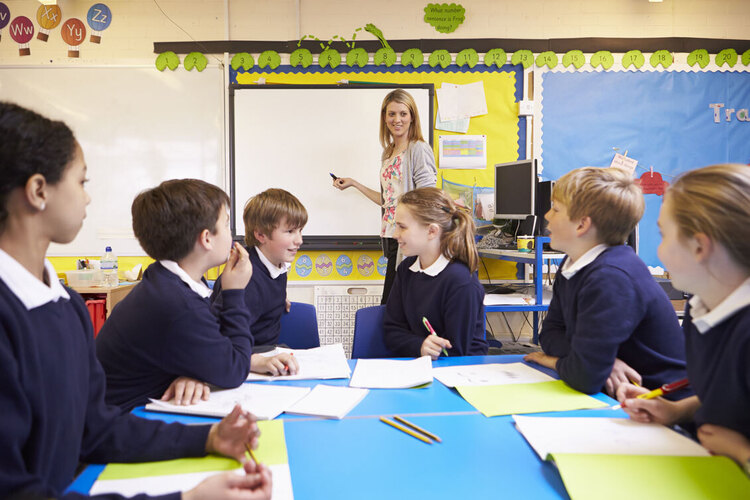What will the classroom look like from September 2020?

As the pandemic hopefully eases and we all adapt to 'the new normal', we cannot help but wonder what that will mean for teachers in the 20/21 academic year. We have all had to adapt to using technology, small, social distanced groups and enforced working from home in the early part of the year, and as we head into summer, the uncertainty of the coming term is, without a doubt, a big question in all our minds. There is little point in crystal ball gazing, though, so, allowing for the uncertainty, what can we reasonably expect the classroom and schools to look like in the academic year 2020/21?
Here are a few of what seem the most likely scenarios:
Smaller classes and more distance
The issue with the classroom environment is that we all know classroom numbers have increased over the years. A class of 22 is around average in secondary environments, and this is up to 30 in KS1. Clearly then, in the majority of classrooms, this will not allow for social distancing. Assuming social distancing is still in place for the Autumn, this is going to force a major change in layouts and timetabling. Whether this will mean more teaching staff and smaller classes, or some other option such as increased use of outdoor teaching and distance learning, will be a matter for governmental policy and availability of individual school facilities.
Sanitiser and sanitary practice will probably be the first and last line of protection
The use of sanitiser, coupled with an increased focus on encouraging learners to wash their hands properly, will underpin everything, and using sanitising stations when entering and leaving a classroom seems the most sensible way to help control contact transmission of the virus. Creating a habit in younger children, though, is a much easier task than in older ones as we all know, so we can expect some changes to teaching practice to include reinforcement of the new sanitary hard line.
Sanitary bubbles and no more 'presenteeism'
In theory, if you maintain a 'safe bubble' in a classroom, you will create an area of safe teaching. Once enough measures are in place, the school itself will, in theory at least, be protected. This is likely to mean that the teaching team will need to take on new duties such as ensuring desks, equipment, and so on are cleaned and probably sanitised regularly. One thing I think we can be certain of is that the tradition of 'muddling through' when you are ill will be frowned upon. The phenomena of 'presenteeism' is unlikely to be welcomed for the foreseeable future, and this is likely to be extended to include anyone in contact with a suspected sufferer.
Electronic and distance learning
We have all become used to using video and distance learning to support learners at home. Bearing in mind the seemingly impossible task of having a full school and maintaining social distance, this is likely to continue. However, digital teaching delivery can be easily integrated into the wider classroom. For example, it may be that mixed distance and classroom learning could be introduced to allow larger groups to be taught with some remote and some present, but whatever the implementation, increased use of technology is almost a certainty.
One-way systems and traffic management
The days of a massive tumble of lively learners bounding into the classroom like a heard of cats are unlikely to return soon. Instead, slow admission and release systems with classroom layouts that facilitate distancing are more likely. Start and end times for lessons could be staggered to avoid the crush in corridors that often accompanies the bell, and left/right one-way systems could reduce interaction on entering and leaving
classes.
All of this assumes that we will still have some form of social distancing and that the threat of Covid-19 will still be a consideration, and hopefully, we can return to normal rather than the 'new normal'. However, it seems unlikely, and we can probably look to the current government guidance as an indicator of what is to come. Let's hope I am wrong, though. Frankly, if I never hear anyone say 'new normal' again, it will be too soon.
Teaching has never been a job for anyone set in their ways or unable to adapt. Yes, there are going to be some pretty seismic changes to the classroom in the coming academic year, and yes, they are going to take some getting used to, but learning is our trade. Adapting and professional development are part of our essential skill set. Teaching professionals took on the challenge of a pandemic and kept educating the nation's learners. Whatever the next term brings we will adapt as we always do.
One certainty in all this uncertainty is that good educators will always be in demand. We are here to support you by helping candidates get the role they deserve and helping employers build a team that will take them to into the new year with confidence.
If you are an Education professional seeking work from the new academic year, or you are a School Leader who is looking for help in growing your team for September 2020, contact us on 0203 771 1138 and our team will be happy to offer advice and guidance.
